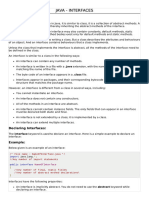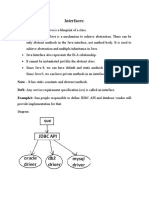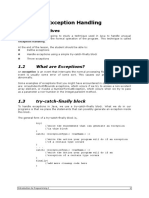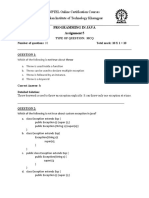0% found this document useful (0 votes)
20 views11 pagesChapter 3 Notes
Chapter 3 discusses interfaces and packages in Java, explaining that interfaces allow for multiple inheritance by enabling classes to implement multiple interfaces without the complexities of traditional multiple inheritance. It details how to define and implement interfaces, including extending interfaces and accessing interface variables. Additionally, the chapter covers the concept of packages for organizing classes, defining package structures, and managing access control within Java applications.
Uploaded by
Prashant BhamareCopyright
© © All Rights Reserved
We take content rights seriously. If you suspect this is your content, claim it here.
Available Formats
Download as PDF, TXT or read online on Scribd
0% found this document useful (0 votes)
20 views11 pagesChapter 3 Notes
Chapter 3 discusses interfaces and packages in Java, explaining that interfaces allow for multiple inheritance by enabling classes to implement multiple interfaces without the complexities of traditional multiple inheritance. It details how to define and implement interfaces, including extending interfaces and accessing interface variables. Additionally, the chapter covers the concept of packages for organizing classes, defining package structures, and managing access control within Java applications.
Uploaded by
Prashant BhamareCopyright
© © All Rights Reserved
We take content rights seriously. If you suspect this is your content, claim it here.
Available Formats
Download as PDF, TXT or read online on Scribd
/ 11























































































